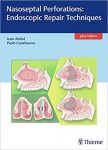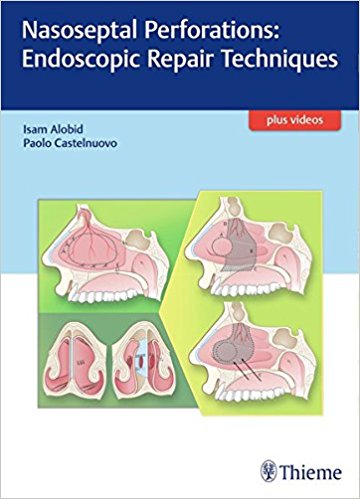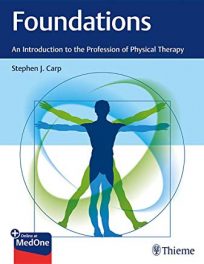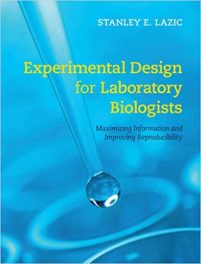 Editors: Isam Alobid, MD; and Paolo Castelnuovo, MD
Editors: Isam Alobid, MD; and Paolo Castelnuovo, MD
Publisher: Thieme – 181 pages, with 218 illustrations
Book Review by: Nano Khilnani
In the words of Manuel Bernal-Sprekelsen who wrote the Foreword to this book, “this book represents a comprehensive overview about the current techniques to achieve close septal perforations and offers an innovative approach to ‘reconstruct’ the full septum that, from my modest point of view, is a surgical revolution.”
There has been a ‘dramatic evolution’ in endoscopic techniques for septal perforation repair in the last 20 years or so, the editors point out in their Preface. They write that except for this one, “there is no book that comprehensively and completely covers the surgical steps of all the different endoscopic approaches to repair septal perforation.”
Thirty-seven specialists in otolaryngology, head and neck surgery, otorhinolaryngology, and rhinology, as well as in neurosurgery and radiology, mainly from Spain and Italy, but also from seven other countries – Brazil, Canada, Ecuador, Egypt, South Korea, Turkey, and the United States – authored the 23 chapters of this book. Below is a list of chapter titles to provide you an overview of the coverage in this book:
- Nasal Anatomy
- Nasal Physiology
- Nasal Septum and Nasal Wall Vascularization
- Nasal Perforation Etiology
- Systemic Diseases Associated with Septal Perforation
- Preoperative Clinical Evaluation of the Patient
- Conservative Treatment
- Nasal Perforation and Septal Prosthesis
- Free Grafts
- Repair of Nasal Septal Perforation by Using Middle Turbinate Flap
- Inferior Turbinate Flap
- Lateral Nasal Wall Flap
- Anterior Ethmoidal Artery Septal Flap
- Unilateral Mucosal Advancement Flap
- Bilateral Cross-Over Flap Technique
- Bilateral Septal Mucosal Flaps in Septal Perforations
- Unilateral Nasal Floor and Inferior Meatus Flap
- Facial Artery Musculomucosal Flap
- “Slide and Patch” Technique
- Backward Extraction Reposition Technique of Quadrangular Cartilage
- Pericranial Flap and Endoscopic Septal Repair
- Quality of Life
- Endoscopic Repair for Septal Perforation: Algorithm
In addition, videos demonstrating step-by-step repair of septal perforation are online at www.MediaCenter.Thieme.com . When prompted while registering your copy of this book, enter the code found on its inside front cover.
Videos – The eight videos are the following:
12.1 – Observation of perfect integration of the anterior portion of the PLNW flap to the nasal septum.
12.2 – Endonasal endoscopic surgery. Releasing the posterior attachment of the PLNW flap and closing the posterior portion of the septal defect.
13.1 – Repair of middle size septal perforation using anterior ethmoidal artery septal flap.
13.3 – Revision of endoscopic septoplasty and double septal perforation closure using anterior ethmoidal artery septal flap.
15.1 – Septal perforation repair using bilateral crossover flap.
17.1 – Septal perforation repair using unilateral inferior meatal mucosal flap (cadaver demo).
17.2 – Septal perforation repair using unilateral inferior meatal mucosal flap (surgical demo).
20.1 – Septal perforation repair using backwards extraction-reposition technique of the quadrangular cartilage.
The benefits of owning this book are many, and some of the important ones are:
- Representing current state of the art in septal perforation repair
- Detailed exposition of the techniques required for complete, successful reconstruction of the nasal septum written by many of the world’s experts who have played an important role in the innovation and expansion of this field
- Photo series of fresh cadaver dissection
- Exploratory drawings and correlated radiological images, and short and long follow-up
- Meeting the educational and reference needs of the target audiences
Why is septal perforation repair so important? Because septal perforation is related to a variety of infectious diseases as well as multi-systemic disorders such as vasculitis and autoimmune diseases. Let us take a look on pages 35-38 at chapter 5, Systemic Diseases Associated with Septal Perforation.
The contents of this chapter like all others in this book, are systematically organized. It begins with a boxed Summary, followed by topics and subtopics, provision of charts, tables, and images to illustrate the issues (adhering to the saying ‘a picture is worth a thousand words’), ending with a Conclusion, and finally a list of additional sources of information in References for further study and exploration.
To give you a brief overview of the contents of this chapter, here is an outline:
Chapter 5: Systemic Diseases Associated with Septal Perforation
- Summary
- Infectious Diseases
- Tuberculosis
- Leprosy
- Syphilis
- Human Immunodeficiency Virus (HIV)
- Fungal Infections
- Multisystemic Disorders (Vasculitis and Autoimmune Diseases)
- Granulomatosis with Polyangiitis
- Eosinophilic Granulomatosis with Polyangiitis
- Sarcoidosis
- Systemic Lupus Erythematosus
- Conclusion
- References
This is an outstanding, pioneering work in the field of septal perforation repair. We congratulate the editors Dr. Isam Alobid and Dr. Paolo Castelnuovo, and the other contributors to this book, for advancing the knowledge and treatment of diseases from which the patients – past, present, and future – have benefited and have been able to improve the quality of their lives, and will continue to do so.
Editors:
Isam Alobid, MD, PhD is Professor of Rhinology and Skull Base Unit in the Department of Otolaryngology in the Hospital Clinic at University of Barcelona in Barcelona, Spain
Paolo Castelnuovo, MD, FRCSEd, FACS is Full Professor and Chairman of the Division of Otorhinolaryngology in the Department of Biotechnology and Life Sciences, Head and Neck Surgery and Forensic Dissection Research Center (HNS & FDRC) at University of Insurbia, ASST Sette Laghi at Ospetale di Circolo Fondazione Macchi in Varese, Italy.







